Kale is delicious when pan fried with onions and garlic and garnished with crispy bacon bits.
Kale is a winter vegetable that grows well in Irish soil. It's a traditional Irish vegetable and dinner ingredient. In years gone by it was widely used in the diet of rural Irish people.
It's most famous when paired with mashed potatoes for a signature Irish dish called colcannon.
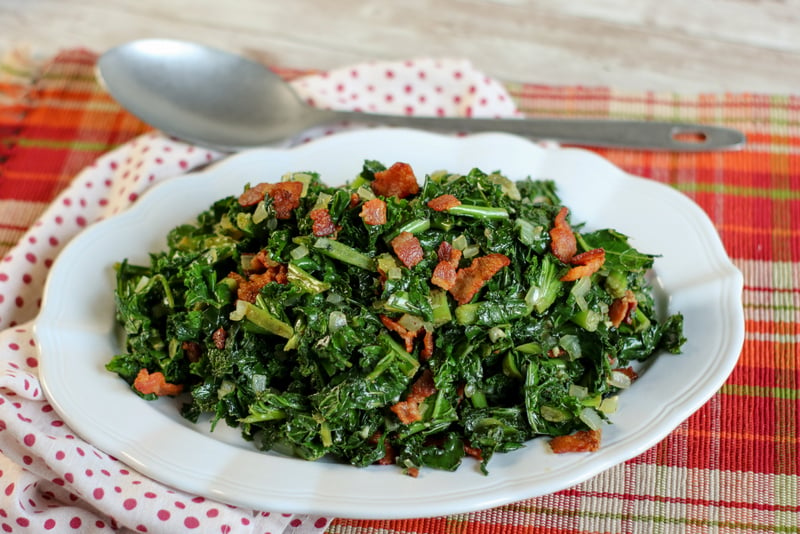
Kale fell out of favor in Ireland in the 1960's and 1970's and was often demoted to the role of cattle fodder. The humble turnip or rutabaga was also primarily deemed as food for cattle.
However, the fortunes of these veggies have greatly improved in recent times. Kale, the leafy green Irish vegetable of winter, is now considered a super food. So here's an easy sautéed kale recipe for your kitchen files.
Table of Contents
Kale As A Superfood
Yay for kale! A true super food with a diverse profile of vitamins and nutrients.
Boasting a wide array of vitamins including vitamin A, B's, C and E, kale also adds minerals, fiber and omega 3 fatty acids to out diets to boost our brain power. And trust me, I need everything I can get my hands on to keep the wheels and cogs of my aging brain in motion.
It's also a great source of antioxidants and other micronutrients.
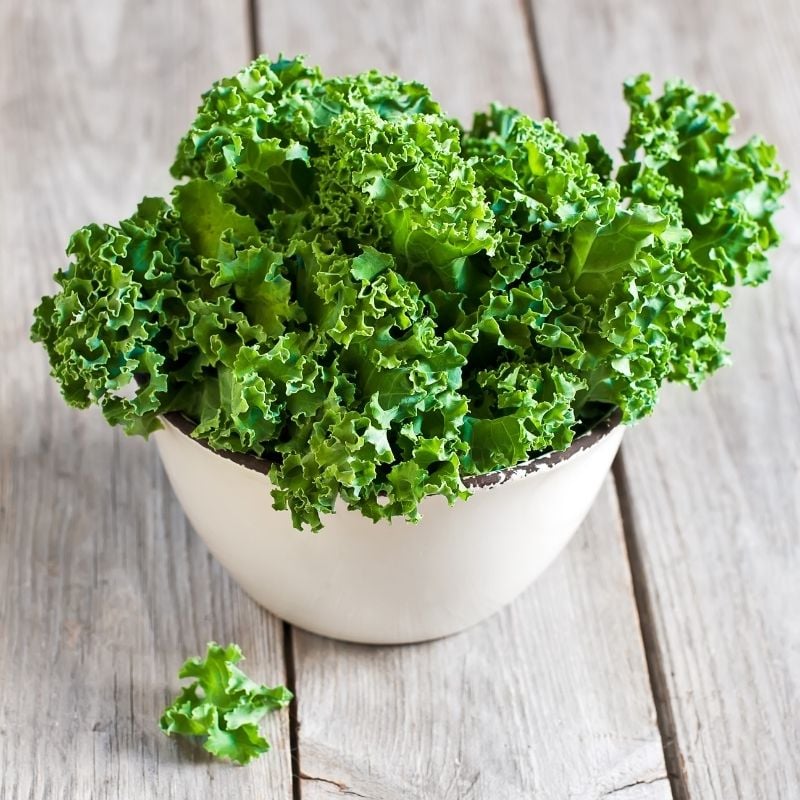
It's wonderful to know kale is such a nutritional power house. My husband is a good vegetable eater, but the varieties of vegetables he likes tend to be what I call Irish vegetables - carrots, parsnips, broccoli, cabbage, rutabaga or turnip and, of course kale.
No fancy egg plants and zucchini on our Irish dinner menus, except when he's away for work. That's when my daughter and I go all Mediterranean in our veggie selections and Tuscan kale becomes our kale of choice.
Kale As A Component of Colcannon
Kale is a favorite Irish green leafy vegetable and it features in Irish colcannon, a dish closely associated with Halloween and some superstitions surrounding the foretelling of romantic fortunes.
Folding kale through mashed potatoes for colcannon is a great veggie guise and might entice some fussy eaters to give this nutritious veg a try.

So far, I've only succeeded in convincing one of my four offspring to give it a go, but she licked her lips and asked for more.
My three boys will be the death of me yet, with their incalcitrant objections to all things veggie. But I'll keep trying, and hopefully one day they'll ask for seconds when I serve them a favorite Irish veggie side.
Learning To Like Kale
Kale has a very strong flavor profile. As a child I found it a little overwhelming, but now as an adult I can't get enough of the stuff.
Cooking vegetables in Ireland in the 1960's involved boiling them till they became totally mushy. In recent years the power of pan searing our favorite veggies has come into vogue, thank God. More goodness is preserved with pan sautéeing, rather than letting all the wonderful vitamins leach into boiling water during cooking.
My granny would talk of the importance of winter greens, when I was young. Back then, I never realized the wisdom in her words and old Irish ways. Knowledge from many generations was passed down through customs and traditions which were expressed in simple utterances, just like when my granny said she craved winter greens when the weather turned cold.
Cottier's Kale
In centuries past the variety of kale grown in Ireland was often called cottier's kale or cottager's kale. Let me explain where this name comes from.
In the years before the Great Irish Famine, there were many cottiers living in rural Ireland. Over 40% of the population lived in poverty. A person, who received a simple dwelling and a small plot of land of about one acre in return for work, was known as a cottier. The word is very similar to cottager.
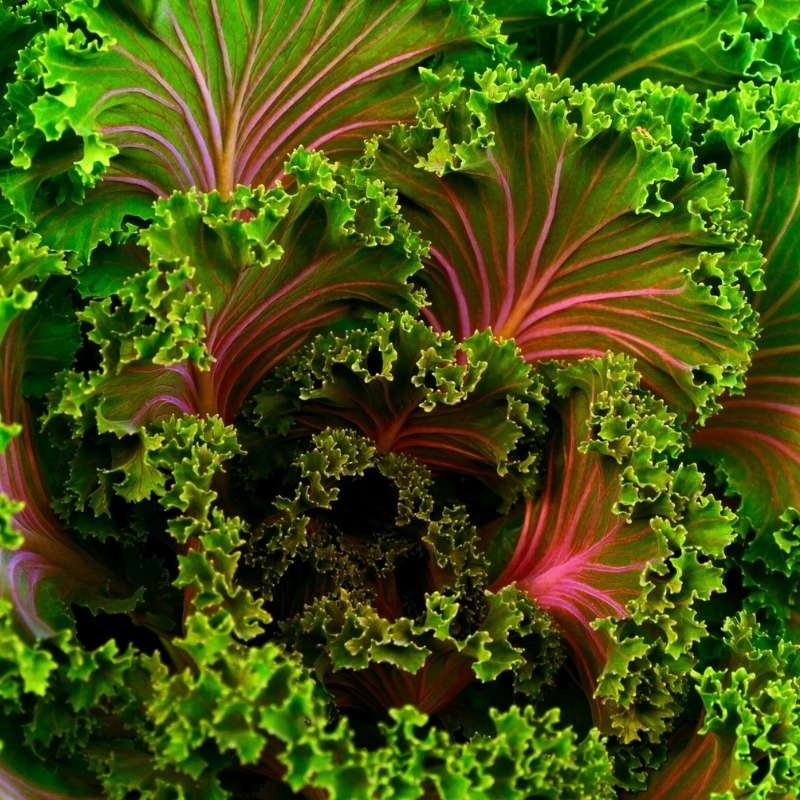
Their employers were usually Irish tenant farmers with a lease on a relatively large plot of land, usually between ten and thirty acres. In return for an agreed upon number of day's service in the fields or helping around the farm, the tenant farmer gave an acre or two to the cottier to grow potatoes and vegetables, and to provide grazing for a cow. Cash was rarely exchanged in this barter of land for work.
Another thing often shared was cuttings and seeds for vegetables. Cottier's kale grows from cuttings not seeds. Slips of kale were passed from one cottier's garden to another, hence the name. It was often referred to by the name "cut and come" because it was so easy to grow from a cutting.
Another name for cottier's kale was "hungry gap." This is because kale was in season during the 6 to 8 week period in early spring when winter produce was running low and there was still some time to wait for the summer crops to be ready. This difficult time usually coincided with Lent, and the perennial kale was christened "hungry gap" since it kept many a cottier or cottager alive during these lean times.
In her wonderful book, Grow, Cook, Nourish: A Kitchen Garden Companion in 500 Recipes, Darina Allen of Ballymaloe, discusses these many names for kale in Ireland. Thank you to Darina for all her wonderful research and knowledge of traditional Irish cooking.
Other varieties of kale grown in Ireland include curly kale, and Tuscan kale (aka Lacinato kale or dinosaur kale).
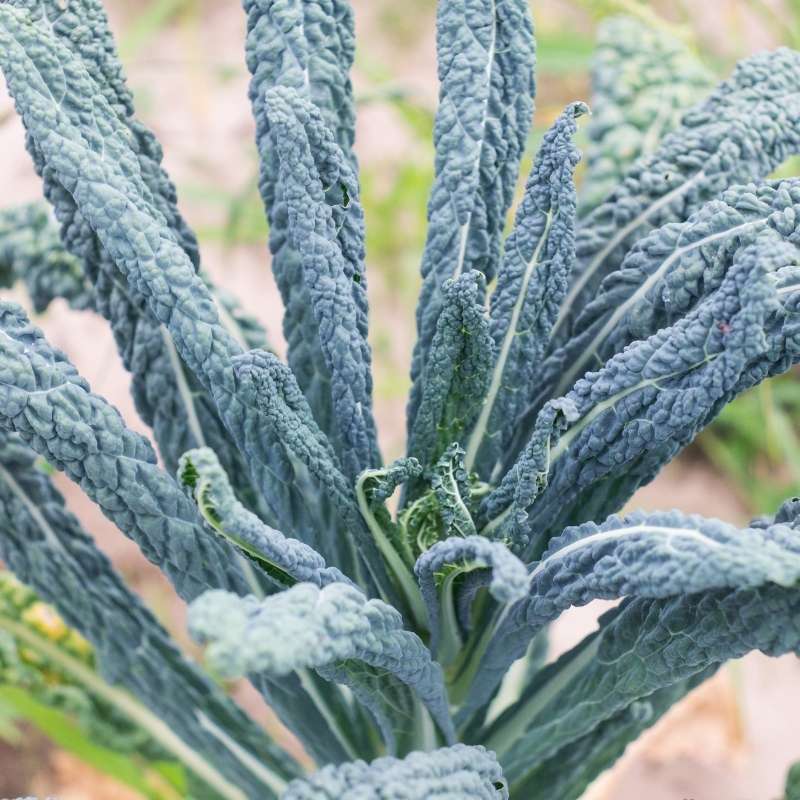
For today's recipe I like to use regular kale (cottier's kale) or curly kale.
And so, without further ado, let's get on with our recipe tutorial and learn how to pan sear kale to perfection, with onions, garlic and bacon for extra flavor and goodness. This is one of my all time favorite kale recipes.
Ingredients For Sautéed Kale
Here's a quick list of what you’ll need for this easy sauteed kale recipe. Check out the printable recipe at the bottom of this post for US and Metric equivalent versions. There you can choose the measurement system that works best for you.
- bunch of kale
- slices of bacon
- onion
- garlic
- oil
- butter (optional)
- salt and pepper (to taste)
This recipe works best using regular kale and curly kale, but if you only have Tuscan kale it works out fine too. The Tuscan kale leaves tend to wilt more in the heat of the pan so they don't retain their structure as much as the other varieties of kale.
You can use regular bacon slices, or thick-cut bacon if you really like a meaty addition to your side dish recipes.
Another possible addition is a few pieces of chopped apple. Cut the apple into small cubes and add it to the kale as it sautés.
A dash of red wine vinegar, apple cider vinegar, or lemon juice at the end of cooking can add a hint of extra freshness to this side dish.
Directions For Cooking Kale In A Skillet
Here you’ll find step-by-step photographic instructions to help you recreate this recipe successfully. There are plenty of tips included along the way. Plus you'll find the printable recipe right at the bottom of this post.

First step is to cut the bacon strips into pieces or lardons. You can use pre-cut bacon lardons, which are sold in most grocery stores.
Place a large skillet on the stove top over medium heat. Add the oil and let it heat fully before adding the bacon. You want to hear a nice sizzle.
Adding a small knob of butter to the oil is optional, but I love the extra depth of flavor a little Irish butter adds to this veggie side.
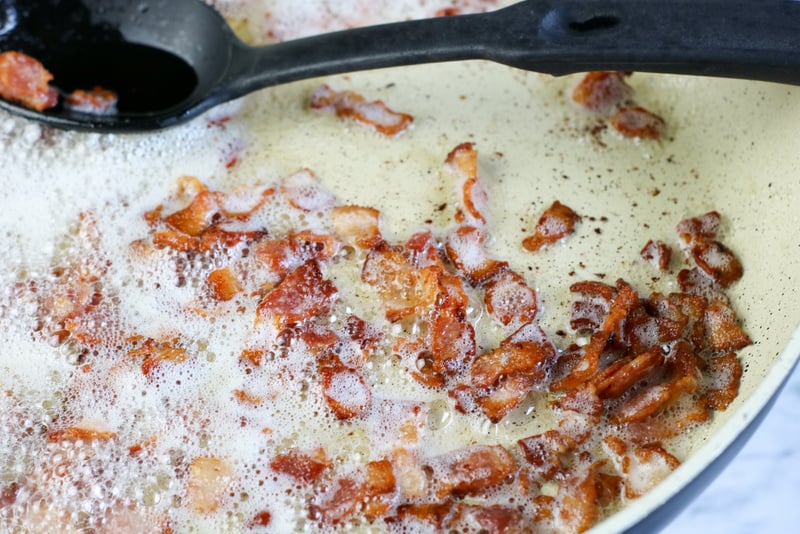
Once the bacon has fully browned and cooked crisply, remove it to a plate lined with paper towel. Allow the bacon to drain and set it aside while the onion and kale are cooked.
Next, it's time to prepare the onion.
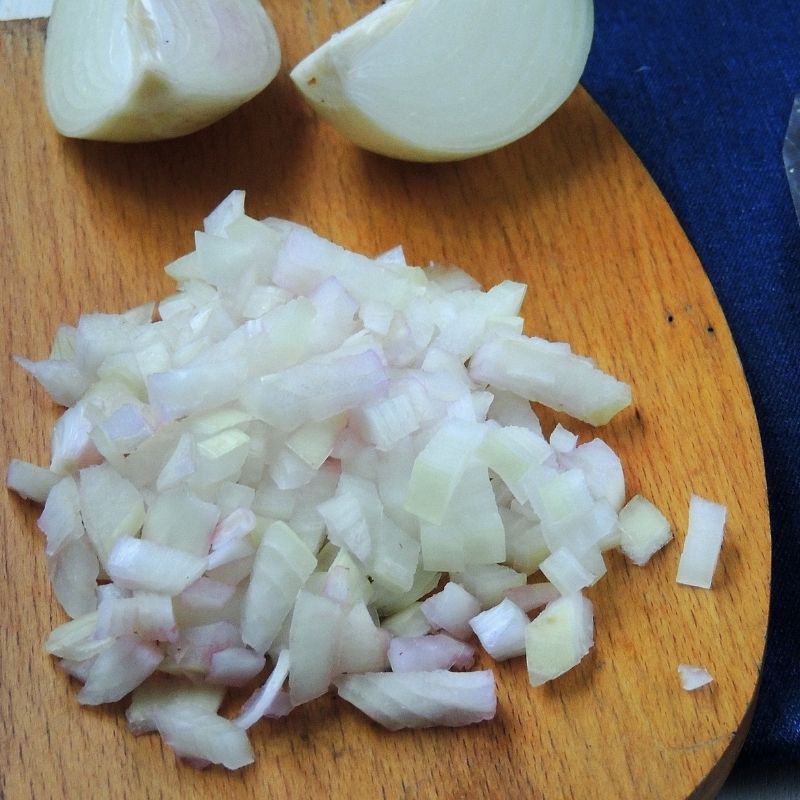
Dice the onion into fairly small pieces. This dish is best if the onion pieces are not too big.
Add the onion to the skillet and sauté until softened.
Remove the hard stems from the kale and chop or shred it into small pieces. Wash it in a colander by placing it under cold running water.
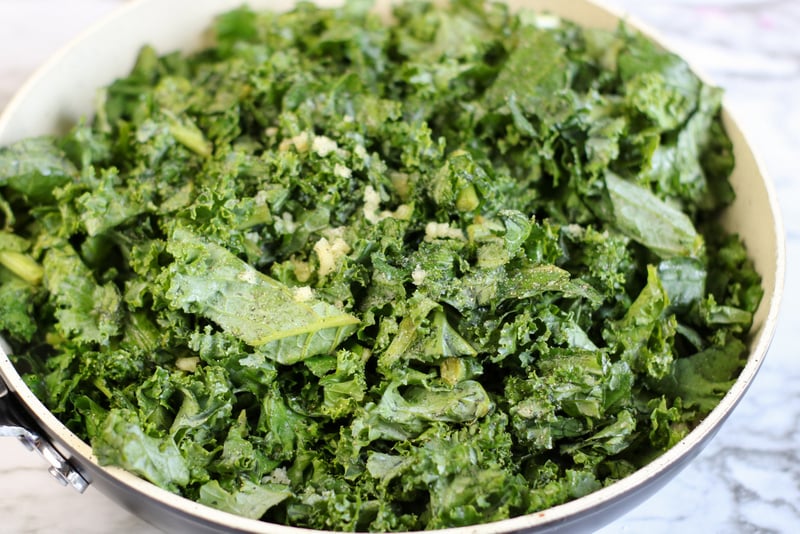
Place the chopped kale and garlic in the skillet and stir them into the onion.
Cook until the kale is softened, which takes about 5 minutes.
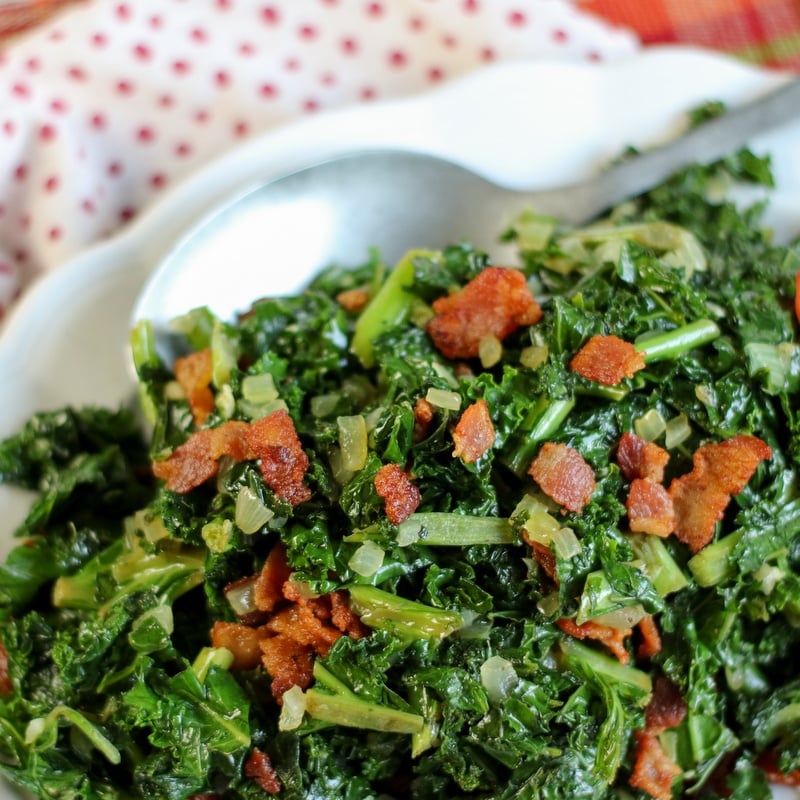
Before serving, sprinkle the kale, onion and garlic, with the cooked bacon.
You may wish to add some freshly ground black pepper as a garnish, or red pepper flakes give this dish a little kick.
This recipe is delicious with ham, or chicken or turkey. In fact it's good with most meats and I love it with roast pork or chops.
This versatile vegetable is a nutritious and easy to prepare side dish.
Recipe Card for Sautéed Bacon Garlic Kale
Here's the printable recipe card.
Kale Sautéed With Bacon And Garlic
Equipment
Ingredients
- 6 cups kale stems removed and coarsely chopped
- 6 slices bacon
- 1 small onion peeled and diced
- 3 cloves garlic minced
- ⅛ teaspoon salt to taste
- ⅛ teaspoon pepper to taste
- 2 tablespoons olive oil for greasing the skillet
- ½ ounce butter for flavor
Instructions
- Cut the bacon strips into pieces or lardons.
- In a large skillet heat the oil over medium heat and add a knob of butter. Add the bacon and cook until browned. Remove the bacon to a plate with paper towel to drain.
- Add the chopped onion to the skillet and cook until softened.
- Place the kale and garlic in the skillet and stir into the onion. Cook until softened, for about 5 minutes.
- Before serving, sprinkle with the cooked bacon.
Nutrition Information is estimated based on the ingredients and cooking instructions as described in each recipe and is intended to be used for informational purposes only. Please note that nutrition details may vary based on methods of preparation, origin and freshness of ingredients used.
I hope you enjoy this recipe and learning about how the Irish grew kale in years gone by.
Here are some other side dishes you might enjoy...
Please do share my recipes on your social media channels such as Facebook, Instagram, Pinterest and Twitter. Thanks for following my recipes and ramblings.

Slán agus beannacht,
(Goodbye and blessings)
Mairéad -Irish American Mom
Pronunciation - slawn ah-gus ban-ock-th
Mairéad - rhymes with parade
Here are some other recipes and ramblings from Ireland, which you might enjoy...
If you're a Pinterest fan, here's a graphic to add to your boards.

Irish Side Dishes
- How To Cook Rutabaga Or Turnip Irish Style
- Chips And Curry Sauce
- Irish Potato Cakes
- How To Roast Potatoes Irish Or English Style
The Irish Language or Gaelic
- Tips for Learning the Irish Language
- The Meaning Of A Meitheal In Irish Culture
- Introducing All About Irish Online Irish Language Courses
- The Celtic Languages


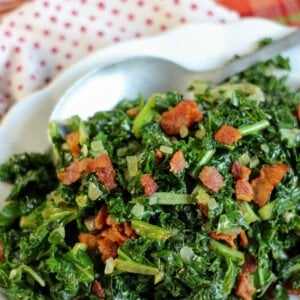



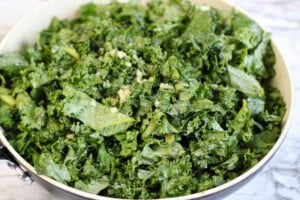
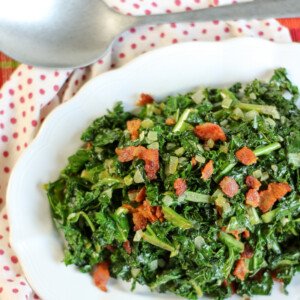
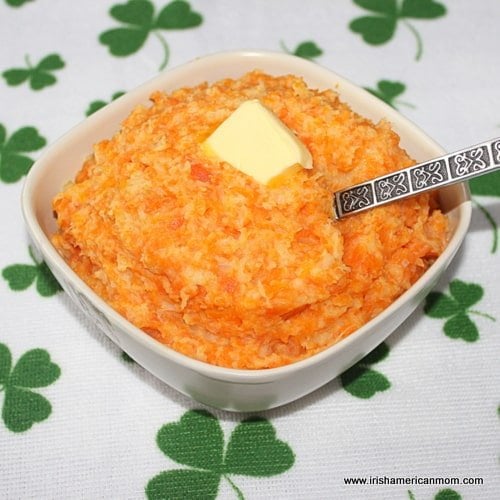
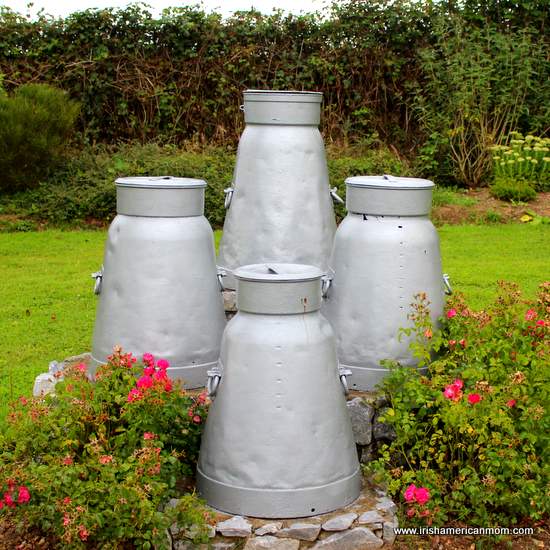
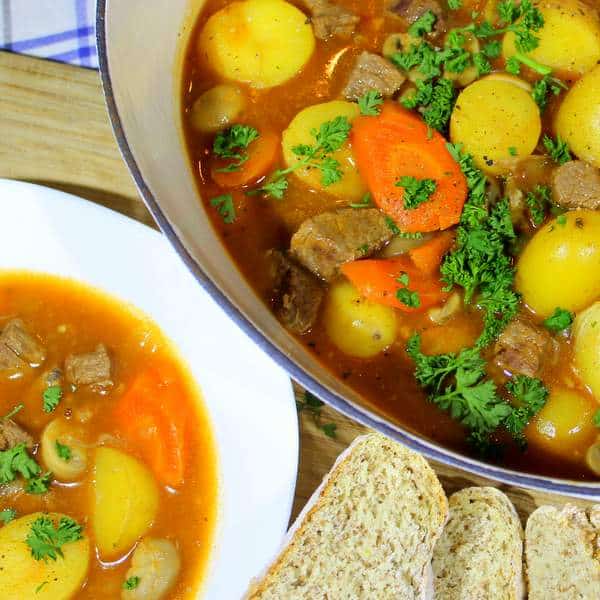












Dale
I love kale and this recipe looks simple and delicious. Here’s to more powerhouse veggies in our diets.
Irish American Mom
Hi Dale - Lovely to hear that you too like kale. Adding more veggies to our diets is so important.
All the best,
Mairéad
Mahy
I love kale! Add bacon and garlic to it, and you get the most flavorful dish ever!
Irish American Mom
Hi Mahy - Bacon and cabbage, bacon and kale, bacon and brussels sprouts - they all go perfectly together. Thanks for stopping by.
All the best,
Mairéad
Dionne
It is almost like taking the best two flavors and adding them to the most healthy ingredients. Love this recipe a lot!
Irish American Mom
Hi Dionne - Thanks so much for your great feedback about this recipe. So glad you like it.
All the best,
Mairéad
Jen
This was a great way to use up the rest of my kale. Bacon makes everything taste so good! Thanks for the recipe!
Irish American Mom
Hi Jen - You can't beat the flavor of bacon - just so good, and it pairs perfectly with kale.
All the best,
Mairéad
Tara
This kale looks absolutely fantastic! I love that vibrant green color and the flavors with the bacon and garlic. Yum!
Irish American Mom
Hi Tara - I love how pan frying kale keeps it looking bright andd appealing to the eye. It's good to not overcook it.
All the best,
Mairéad
Jovita
What a great recipe! I love this kale sautéed because it’s so easy to make. Thanks for sharing!
Irish American Mom
Hi Jovita - Thanks so much for taking the time to rate my recipe. So glad you found it to be an easy recipe.
All the best,
Mairéad